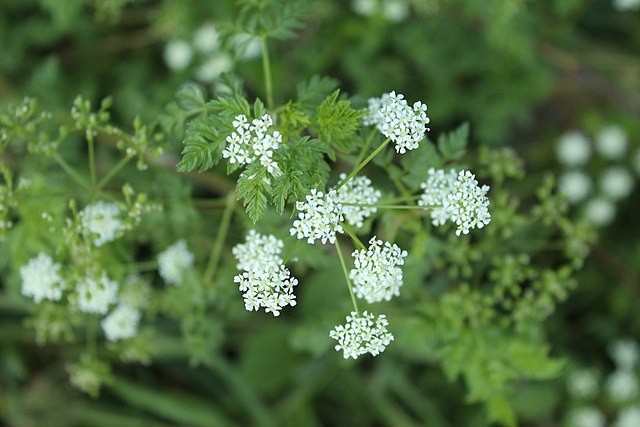
Deadly hemlocks overgrow at Suffolk village, putting children at risk. The notoriously poisonous plants, which are fatal when ingested, can reportedly be seen along the kids' way into school.
Hemlock in Suffolk Village
On Monday, it was revealed that children's lives in a Suffolk community were "at stake" after hemlock, a plant that may be lethal if consumed, was discovered on their usual route to school. Hemlock is not the only risky neighbor in our neighborhood.
The days of the Bucklesham hemlock, however, was already numbered, BBC reported.
According to East Anglian Daily Times, the road was closed from 9:30 a.m. to 12 p.m. on Monday (July 10) for the undergrowth to be removed.
Parish council chairman David Brinkley first brought the issue to the attention of Suffolk County Council in June. Since then, the county has promised to block the road and eliminate the problematic plant.
Mr. Brinkley claims that delaying the plant's removal "puts children's lives at stake" in his call to action. Similar worries plague Rachael Rudge, the headteacher.
They are placed in a particularly challenging and risky situation by having to walk on the roadways because the path is unsafe due to all the hemlock and overgrown vegetation, she claims.
But according to Prof. Iain Barr of the University of East Anglia, there are still 28,000 hemlock trees scattered over the UK.
The BBC hears from Prof. Barr, a professor of field ecology, about other hazardous plants hiding in plain sight and why some of them are so toxic.
Barr stated that the hemlock water dropwort is extremely widespread on the [Norfolk and Suffolk] Broads. It is also extremely poisonous.
Oenanthe crocata, sometimes referred to as "poison parsnip" or "hemlock water dropwort," is one of the most dangerous plants that are endemic to the United Kingdom.
Although both hemlock and hemlock water dropwort belong to the same family as carrots, they have different habitats and toxicities. The central nervous system is the target of oenanthotoxin, a toxic and potent convulsant found in tubers, stems, and leaves.
Coniine, conhydrine, pseudoconhydrine, methyl-coniine, and ethyl-piperidine are five alkaloids found in hemlock that produce intense vomiting and paralysis of the nervous system.
ALSO READ : Lethal Death Cap Responsible for 90% Mushroom-Related Death Has an FDA-Approved Antidote [Report]
How Plants Become So Toxic?
In the UK, fatalities caused by toxic plants are extremely uncommon, yet they do occur. According to the Office for National Statistics, "toxic effects of ingested plants" resulted in six fatalities in 2016.
A plant that is somewhat more toxic to grazing animals than the ones next to it has a slight advantage since plants have evolved toxins to avoid being eaten, according to Dr. Barr.
This process eventually reaches a stage where some plants can become extremely harmful to some species.
He said that rather than us humans, the majority of the UK's native toxic plants evolved their poisons to scare away enormous animals like woolly mammoths or 2 m (6 ft 6 in) tall aurochs.
The alkaloids in plants would make an auroch or mammoth feel unwell if it overgrazed. It was just intended to make them ill and cause them to stop eating, not to kill them.
He asserts that plant toxins did not evolve to stop kids from walking to school.
RELATED ARTICLE: Can Yoga and Meditation Help with Coronavirus Treatment?
Check out more news and information on Mushroom in Science Times.











